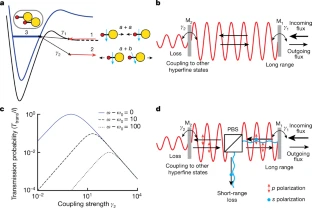MIT News February 1, 2023
Whether collisional resonances exist for ultracold ground-state molecules has been debated owing to the possibly high density of states and/or rapid decay of the resonant complex. An international team of researchers (USA MIT, University of Nevada, Canada) reports a very pronounced and narrow (25 mG) Feshbach resonance in collisions between two triplet ground-state NaLi molecules. This molecular Feshbach resonance has two special characteristics. First, the collisional loss rate is enhanced by more than two orders of magnitude above the background loss rate, which is saturated at the p-wave universal value, owing to strong chemical reactivity. Second, the resonance is located at a magnetic field where two open channels become nearly degenerate. This implies that the intermediate complex predominantly decays to the second open channel. According to the researchers their observations provide strong evidence for the existence of long-lived coherent intermediate complexes even in systems without reaction barriers and open the possibility of coherent control of chemical reactions…read more. TECHNICAL ARTICLE

Three-state model for the resonance and optical analogues. Credit: Nature volume 614, pages54–58 (2023)